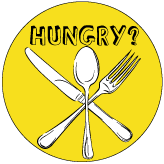
|
CITY LIVING · SEP 10 2007
Changing LanesBROADWAY DISTRICT FILLED WITH COLOURFUL HISTORY
by Caitlin Ward Recently, I was having lunch with my mother when she suddenly said to me, “you know, I was on Broadway and I saw two speed walkers.”
Living only a few blocks from the street and spending a goodly amount of time on it, I didn’t think seeing speed walkers on Broadway was that strange. I nodded as she described them to me, finally saying, “mom, there are a lot of speed walkers on Broadway; they have a store there, you know.”
She laughed. “Broadway’s changed so much.”
It’s not something I would argue with. A good portion of my adolescence was spent going in to Broadway’s second-hand bookstores, scrounging change for fries at the Broadway Cafe, and combing the twenty-five cent record bins at the Vinyl Diner for yet another copy of the Monkees’ Pisces, Aquarius, Capricorn & Jones, Ltd. (my sister was looking to have a city-wide monopoly on the album). Since I’ve been going to Broadway, I’ve seen a lot of changes on the street myself; Bygone Books is closed, the Salvation Army I bought old wool in is gone, and Gibson Photography has long since been replaced by Brainsport. What I realized, in conversation with my mother (and later, my father), is that as a young teenager I was witnessing what I now recognize as the final transitions of a street in the midst of gentrification.
My parents, teenagers in the late 1960s and young adults in the early 1970s, knew a Broadway Avenue that was much different than the street I know. It was a street possessing half a dozen cheap coffee shops with eccentric owners and sometimes questionable clientele, old school barber shops with barbers who spent most of the day sleeping in the chair, strange little stores that popped up for six months and then disappeared, low rent houses off 11th St., a Dairy Building that actually processed milk, and a Hose and Hydrant that was a working fire hall.
“I had a studio in the front window of the Farnum Block [now Lydia’s Pub] where I taught guitar lessons,” my father tells me. “I lived upstairs in an apartment at the back.” He laughs. “It was a dump. My roommate had this recliner that came with the place, and every time someone sat on it something would fall out the bottom. Blue pills, a bamboo hash pipe on one occasion.”
Just behind the Farnum Block stands a small pink house with green trim, now home to Turning the Tide bookstore. In the early 1970s, it was the residence of Saskatoon band Humphrey and the Dump Trucks, and called “the Merry Mansion.”
“Two band members lived there permanently, but there were a half dozen other people staying there at any given time. It’s a tiny house. There was rehearsal space, but I can’t think where,” my father says. “I’m pretty sure they were just stoned most of the time.”
It’s not unusual for the businesses in a commercial district to change frequently over the course of the years, but what is interesting about Broadway is that some of the businesses themselves have changed dramatically, particularly the Broadway Theatre. Initially, the theatre was much like any other independent theatre, feature films during the week and children’s Saturday matinees for a nickel. However, in the 1960s, the theatre turned into a porn house. My father recalls a time when a friend visiting from Ontario was determined to see a movie one evening. It was fairly late, and the only place they could get to on time was the Broadway.
“I warned him that we probably shouldn’t go, but he wasn’t going to give up on the idea,” my father laughs. “In the theatre there was us, and seven grizzly old men in trench coats.”
That night, it was a double feature.
“The cinematography of The Lustful Vicar was actually quite lovely,” he tells me (I don’t believe him, and neither does my mother). “There wasn’t any nudity in it, actually; just a lot of Swedish countryside.”
The second feature was apparently crap—shockingly.
“They had university movie nights there, too,” my mother says. “So one night they’d have The Amorous Headmaster and the next, it was Ingmar Bergman.”
Over the course of the past three decades, the little diners have largely been replaced by upscale bistros, high-end boutiques have overtaken many of the strange little shops, and the Broadway Theatre has gone art house.
“The same thing seems to happen everywhere,” my mother says. “Gastown in Vancouver, Whyte Ave. in Edmonton, Yorkville in Toronto; they all started out like Broadway did, then went upscale when people got interested in it.”
However much the street has changed, though, there are still a few remnants of what Broadway once was; the Nutana Bakery still offers cheap doughnuts with exorbitant amounts of whipped cream, Broadway Pharmacy has been in the same location for decades, one can always go to Wayne Shaw Books for rousing arguments with the proprietor and good second-hand books that smell vaguely of cat, and the streets are still trawled at night by twenty-somethings looking for something to do.
|



